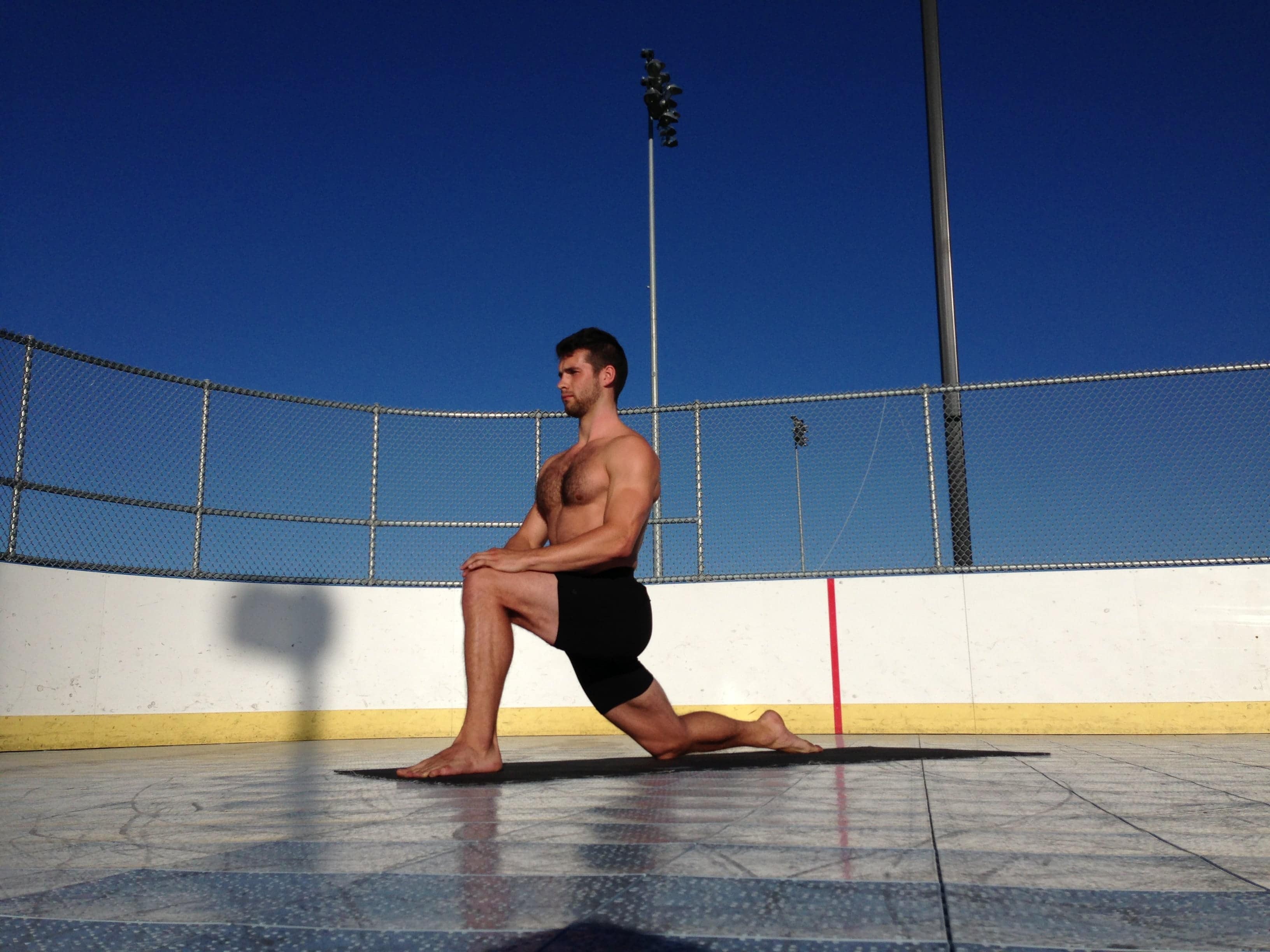Intro: POTW is Low Lunge, which is a great pose that can be used as an active restorative or warm-up pose to help stretch out the hip flexor and work the core. Low lunge can be the basis of many different variations and is something that is almost always included in a MFY session.
Technique: From a standing position at the top of the mat, step your right foot to the back of mat, and then lower the right knee and untuck the back foot. To make the stretch active, squeeze your inner thighs toward one another to deepen the stretch in the right hip flexor) and engage the abdominal muscles. You can press into the left bottom of the left foot to lengthen your body and grow taller. Your core should be engaged and your pelvis slightly tilted to bring your butt under your body in order to protect your lower back. The further apart your legs are, the deeper this stretch will be. You should be able to place your knee over the ankle in the left leg, so if you cannot do this, shorten the distance between your left knee and right foot.
The most common variation is to reach the arms over the head, perpendicular to the ground. Plug your arms into your shoulders so that the neck is relaxed, and turn your arms inward so that your pinky fingers are close to one another and your palms are facing back. If you have larger shoulders, your arms should be further apart. The ribs should turn in towards one another so prevent puffing your chest out. Back is as straight as possible.
Modification: Low lunge with the knee on the ground is a modification for high lunge. Another modification is resting your arms on your front thigh and relaxing the hips in order to facilitate a more restorative pose. In the restorative modification, your front knee is free to go past the ankle, whereas in the more active modification, your front knee you should be right above the front ankle.
Tips: Make this warm-up pose and active stretch by squeezing your thighs toward one another (toward the midline) and pressing into the front foot. By making the pose an active one, you can use it at the beginning of the workout and not worry about the potentially harmful effects of doing a static stretch at the beginning of a workout.
Want to learn more than just one pose? The #1 bestselling Yoga Basics for Men eBook is the best way to learn yoga quickly. This digital guide includes an in-depth description for technique, target areas, practical benefits, and helpful tips of over 100 postures. Learn more about Yoga Basics for Men by clicking here!

